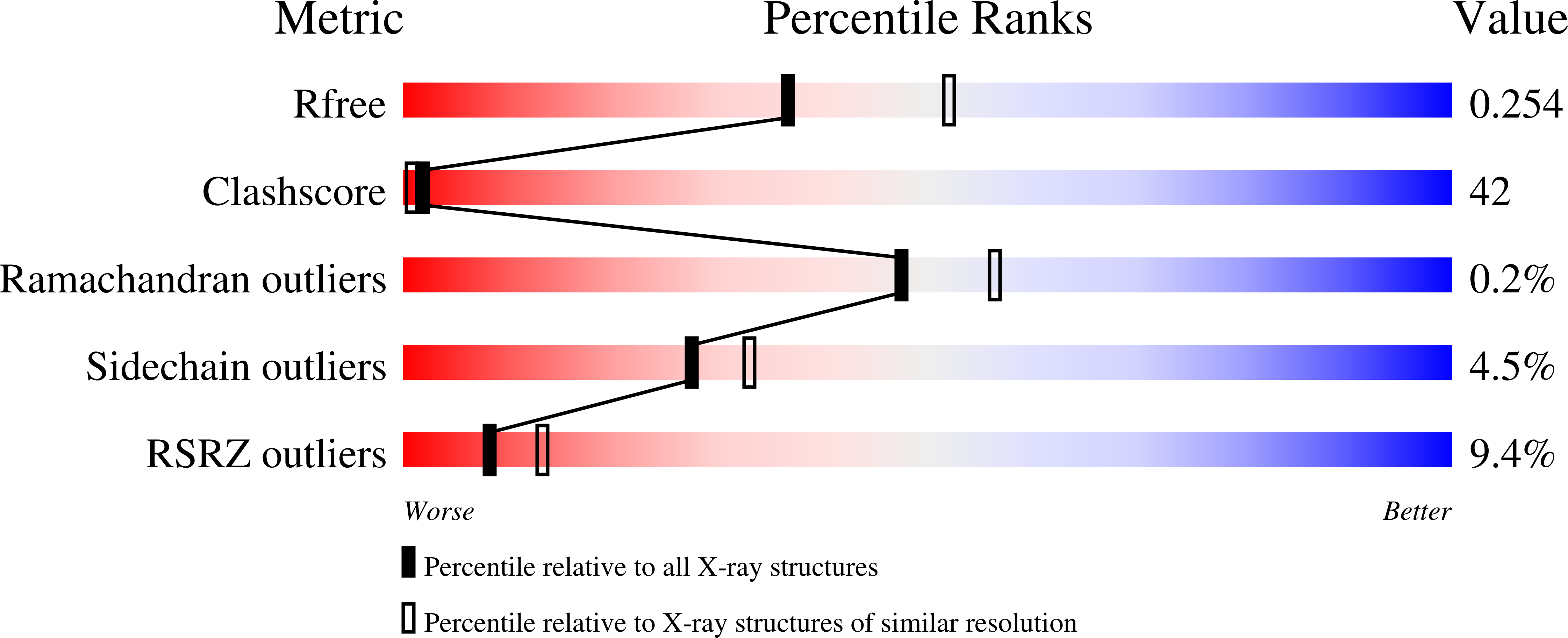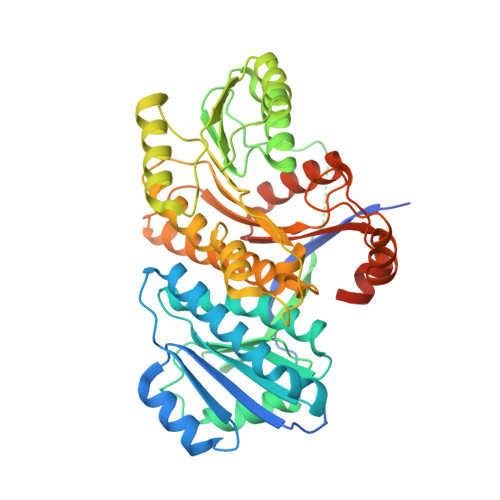Structural and functional studies of a trans-acyltransferase polyketide assembly line enzyme that catalyzes stereoselective alpha- and beta-ketoreduction.
Piasecki, S.K., Zheng, J., Axelrod, A.J., E Detelich, M., Keatinge-Clay, A.T.(2014) Proteins 82: 2067-2077
- PubMed: 24634061
- DOI: https://doi.org/10.1002/prot.24561
- Primary Citation of Related Structures:
4J1Q, 4J1S - PubMed Abstract:
While the cis-acyltransferase modular polyketide synthase assembly lines have largely been structurally dissected, enzymes from within the recently discovered trans-acyltransferase polyketide synthase assembly lines are just starting to be observed crystallographically. Here we examine the ketoreductase (KR) from the first polyketide synthase module of the bacillaene nonribosomal peptide synthetase/polyketide synthase at 2.35-? resolution. This KR naturally reduces both ¦Á- and ¦Â-keto groups and is the only KR known to do so during the biosynthesis of a polyketide. The isolated KR not only reduced an N-acetylcysteamine-bound ¦Â-keto substrate to a D-¦Â-hydroxy product, but also an N-acetylcysteamine-bound ¦Á-keto substrate to an L-¦Á-hydroxy product. That the substrates must enter the active site from opposite directions to generate these stereochemistries suggests that the acyl-phosphopantetheine moiety is capable of accessing very different conformations despite being anchored to a serine residue of a docked acyl carrier protein. The features enabling stereocontrolled ¦Á-ketoreduction may not be extensive since a KR that naturally reduces a ¦Â-keto group within a cis-acyltransferase polyketide synthase was identified that performs a completely stereoselective reduction of the same ¦Á-keto substrate to generate the D-¦Á-hydroxy product. A sequence analysis of trans-acyltransferase KRs reveals that a single residue, rather than a three-residue motif found in cis-acyltransferase KRs, is predictive of the orientation of the resulting ¦Â-hydroxyl group.
Organizational Affiliation:
Institute for Cellular and Molecular Biology, The University of Texas at Austin, Texas, 78712.















